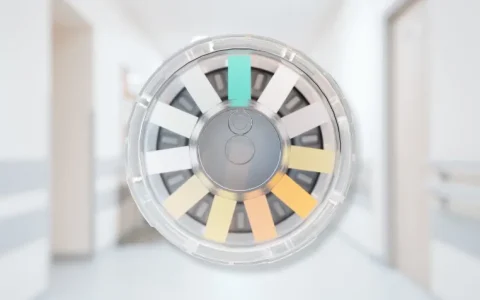Ensuring equitable healthcare access
A shared vision for reliable diagnostics everywhere
It is essential that diagnostic tools in low-resource settings and remote areas provide the same level of accuracy as those used in specialised hospital settings. Current guidelines from the Royal College of Nursing (RCN) and the Royal College of Pathologists (RCAP) support the implementation of technologies that ensure diagnostic accuracy across all healthcare settings. This vision directly addresses core challenges such as:
- Access and Availability: Ensuring that diagnostics reach underserved areas without sacrificing quality or reliability.
- Consistency and Accuracy: Providing repeatable and precise diagnostic results, thereby minimising the risk of misdiagnosis and ensuring continuity of care.
- Ease of Use for All Healthcare Providers: Developing systems that are operable by healthcare providers with varying levels of expertise, thus reducing the need for extensive training.
The UTS Digital Urine Testing System is specifically designed to meet these global healthcare needs, ensuring that high-quality, reliable diagnostics are available in both city hospitals and rural clinics. With a unique blend of user-friendly design, advanced technology, and portability, UTS offers diagnostic reliability that other systems often struggle to provide outside controlled environments.
Full Data Integration for Seamless Patient Care: By automating data recording and integrating with electronic health records (EHR), UTS facilitates seamless patient data transfer and trend tracking, which is essential for effective management of chronic and acute health conditions.
Precision Accuracy with UTS: The UTS system utilises advanced reflectance photometry, eliminating subjective interpretation and timing errors associated with traditional dipstick testing. This ensures that every test yields consistent, objective results reflective of laboratory-grade quality.
Ease of Use for All Healthcare Providers: UTS is designed for universal usability, requiring minimal training to operate, thereby supporting healthcare providers in all sectors.
Portable and Adaptable Across Locations: Lightweight and portable, UTS operates efficiently in various healthcare environments, including primary care, community care and mobile clinics. Its dual power capability allows operation in remote locations without compromising the accuracy expected in hospital-grade diagnostics.
By addressing barriers such as usability, data accuracy, and portability, UTS supports the goals of equitable diagnostic access, aligning with WHO, NHS, and CDC initiatives. Unlike systems that require specialised environments or training, UTS ensures that quality diagnostics are available and accessible across all healthcare settings.
The UTS Digital Urine Testing System embodies a commitment to diagnostic equity, advancing global health goals for fair, universal healthcare. By empowering providers with a reliable, efficient, and high-quality tool, UTS ensures that every patient receives accurate and timely care, no matter where they are treated.
References
- World Health Organization (WHO). (2023). Universal Health Coverage. [online] https://www.who.int/health-topics/universal-health-coverage
- NHS England. (2019). The NHS Long Term Plan. [online] https://www.longtermplan.nhs.uk
- Centers for Disease Control and Prevention (CDC). (2022). Health Equity. [online] https://www.cdc.gov/healthequity
- Royal College of Nursing (RCN). (2021). Digital Future of Nursing: A New Era of Digital Practice. [online] https://www.rcn.org.uk
- Royal College of Pathologists. (2023). National Strategic Guidance for Point-of-Care Testing in the UK. [online] https://www.rcpath.org
More research & case studies

Introduction to Urinalysis
Urinalysis is a vital, non-invasive diagnostic tool that supports early detection, disease monitoring, and preventive care across all levels of healthcare, making it essential in modern medical practice.

Dont be a Dipstick! Why Urinalysis no longer needs a Dipstick
Urinalysis is one of the most common diagnostic tests in global healthcare. Yet despite its clinical importance, it still largely relies on outdated dipstick technology, an approach that introduces significant limitations, regardless of whether results are interpreted manually or using a digital reader.

The History of Urinalysis. From ancient practices to modern diagnostics
Urinalysis, the examination of urine to gain insights into health, is one of the oldest diagnostic practices in medicine. This simple yet powerful test has evolved over thousands of years, from the ancient world’s early observations to today’s sophisticated laboratory techniques. This section explores the fascinating journey of urinalysis and discovers how it has shaped healthcare as we know it.